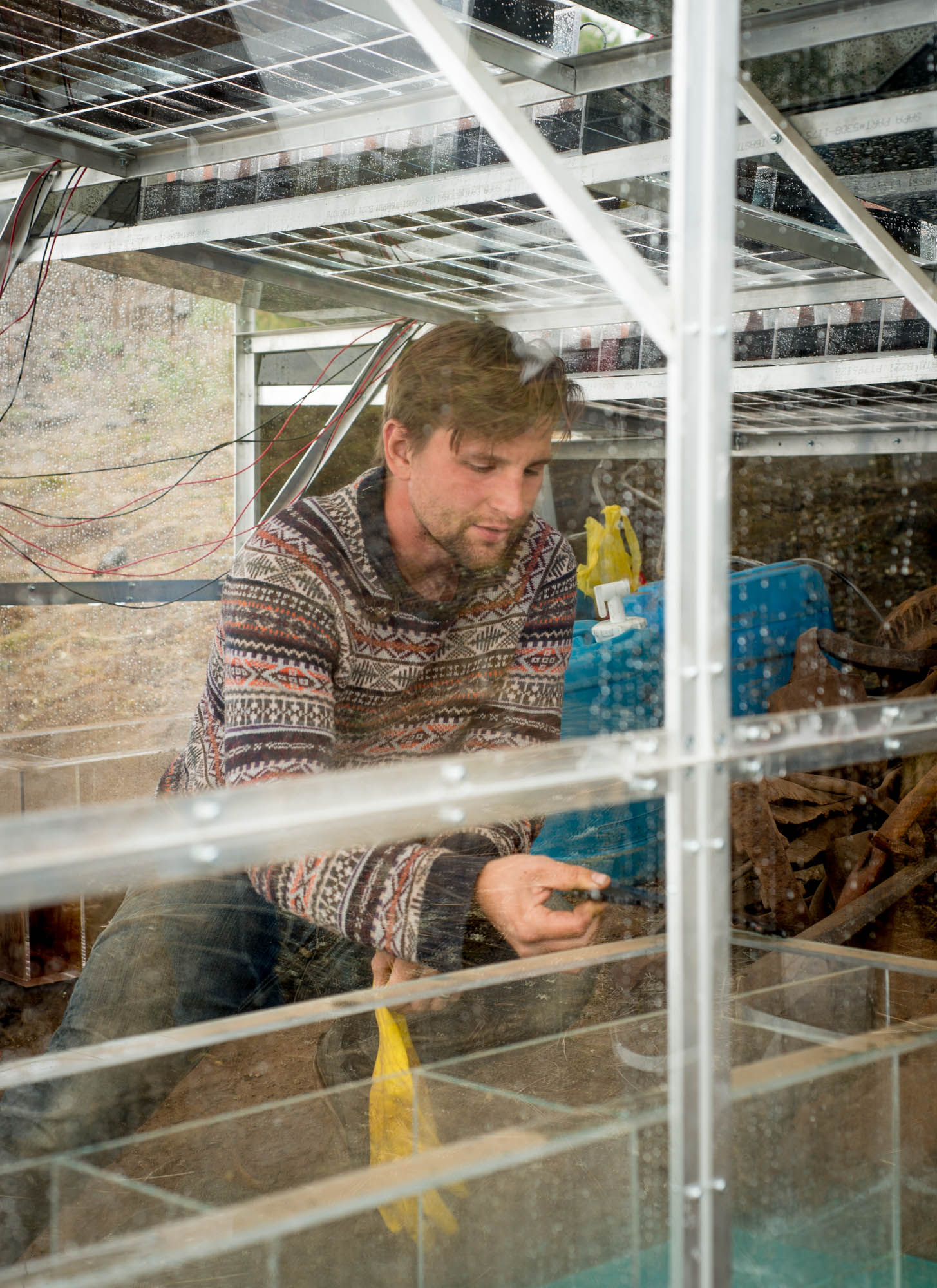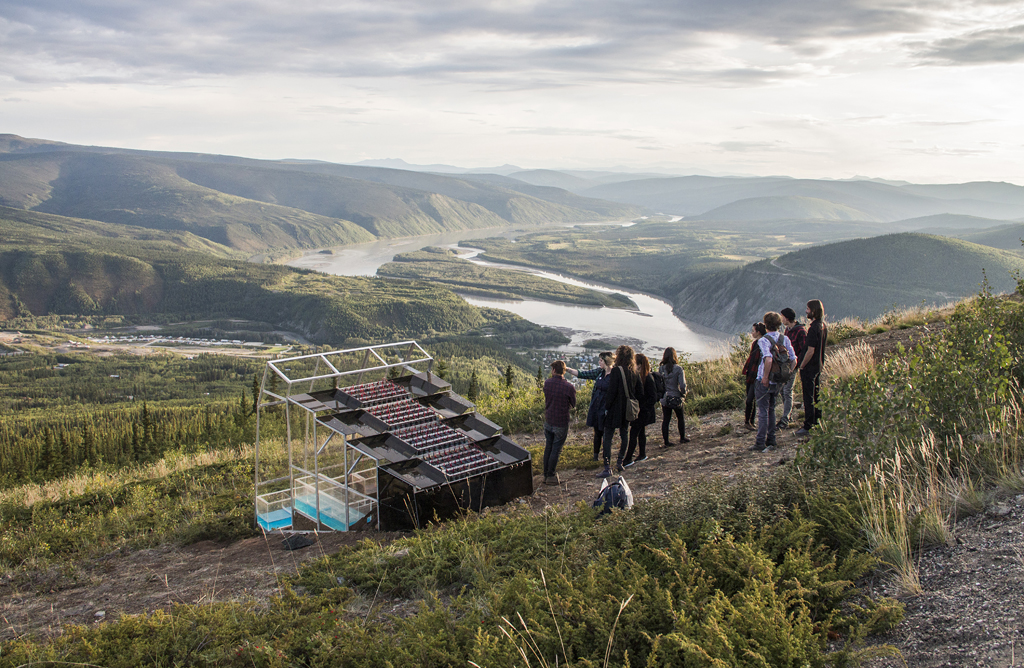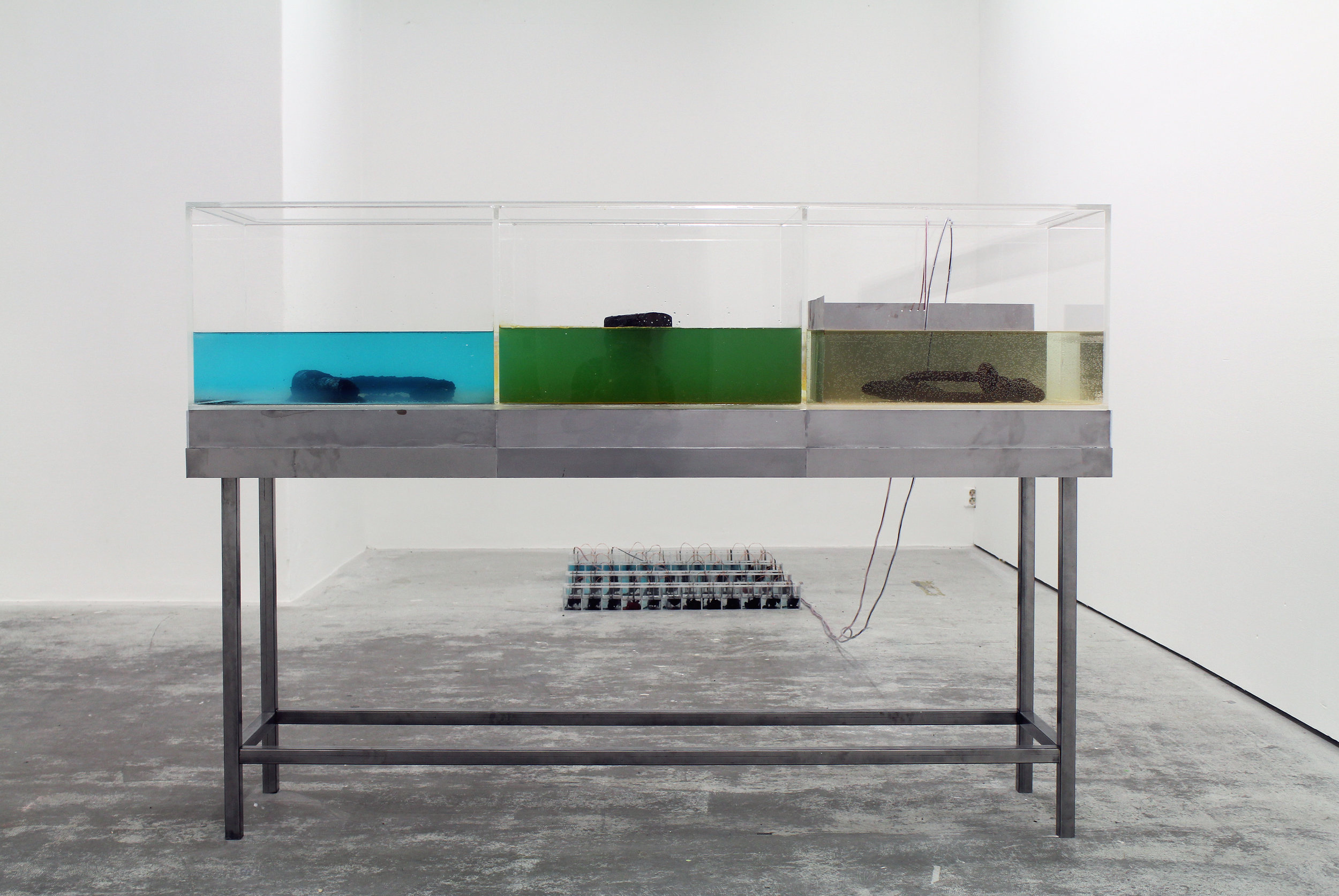

























Time Machine for Abandoned Futures (2015)
During my first visit to Dawson City, in January 2010, I was brought to look out at the vast intestinal tailing piles left by decades of dredging in the area. For me, this vista became the lasting image of my trip to the Yukon. In a town that boasts many historical monuments, these tailings seemed to represent the ‘authentic’ ruins of the Klondike gold rush.
In revisiting Dawson, I began with a quintessentially Klondike activity – a kind of treasure hunting. Over the course of several weeks, I walked along the dredge tailings near Bonanza Creek, using a metal detector to excavate industrial cast-offs.
With this collection in tow, I brought it to the Midnight Dome, where I installed my Time Machine; a strange off-the-grid laboratory which became my home for over a week. This shelter adopts design strategies common in earthship architecture (rain-water collection, south facing greenhouse windows, rammed earth, etc.), but rather than environmental sustainability as its guiding principle, this bubbling chemical structure comes closer to the absurd inefficiency of many of our modern industrial pursuits. Powering this machine is a massive, roof-top battery, in which etching plates and etching acid power an electrolytic cleaning process to remove the rust from my scavenged artifacts. Once cleaned, I meticulously etched the markings left by decades of rust and erosion, forming a kind of topographical map. The result is a glistening surface that memorializes the artifact’s entire lifespan. Overlooking the dredge tailings, this machine presents a kind of prototype for the preservation of degradation.
Time Machine for Abandoned Futures was produced with the support of Klondike Institute of Art & Culture and Canada Council for the Arts
Image: collecting artifacts near Bonanza Creek, 2015.

Time Machine for Abandoned Futures, plexiglas, aluminum, copper sulfate, soda ash, copper plates, zinc plates, wires, iron artifacts (excavated from Bonanza Creek tailing piles, Dawson City, YT), 2015.

Time Machine for Abandoned Futures (Prototype I), iron artifacts, zinc etching plates, copper etching plates, copper sulphate, soda ash, steel, plexiglas, wire, 2014.
Installation View, Platform Stockholm

The Preservation of Degradation, iron artifacts, zinc etching plates, glass, 2015
Photo: Andrew Butkevicius